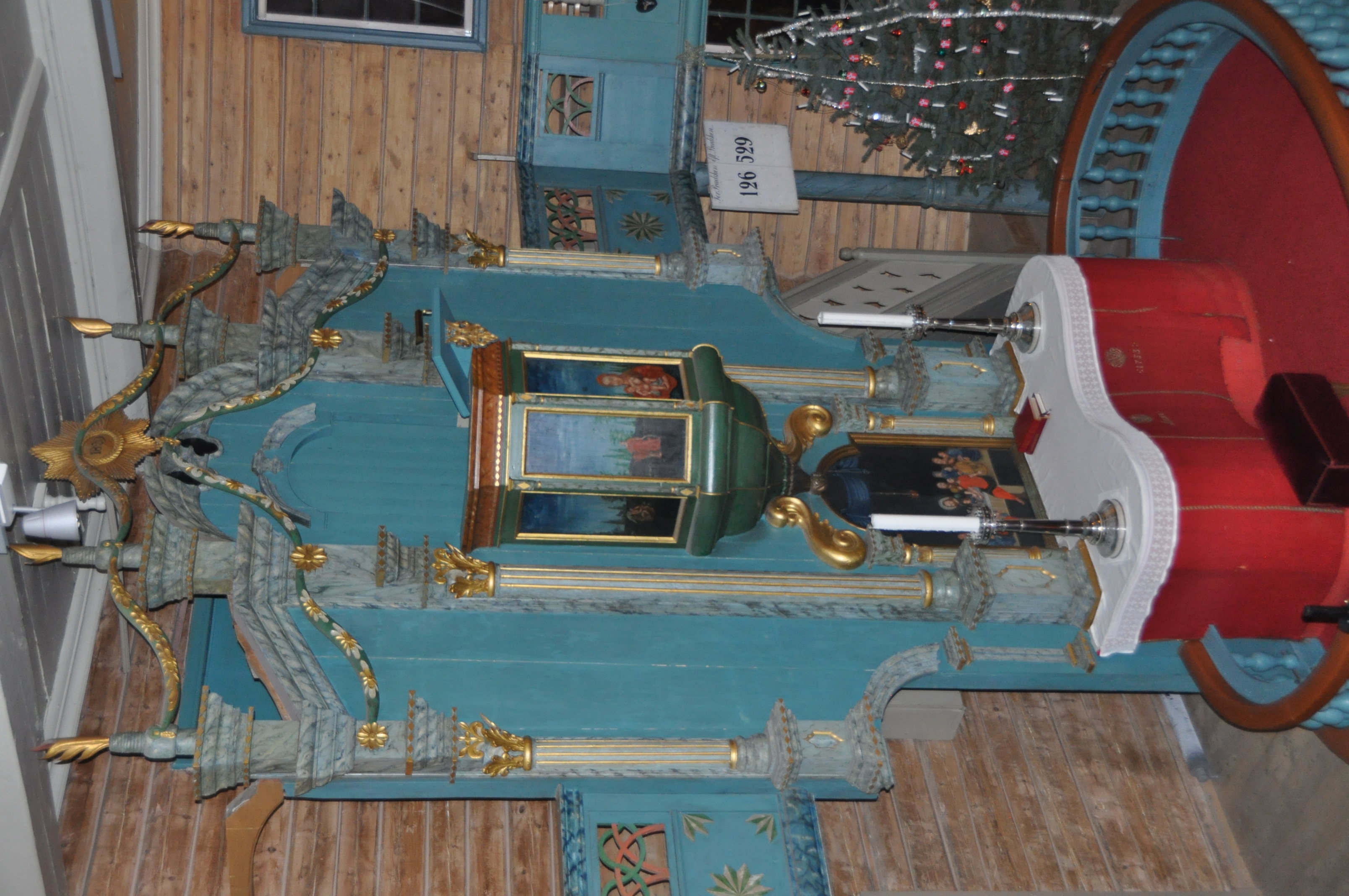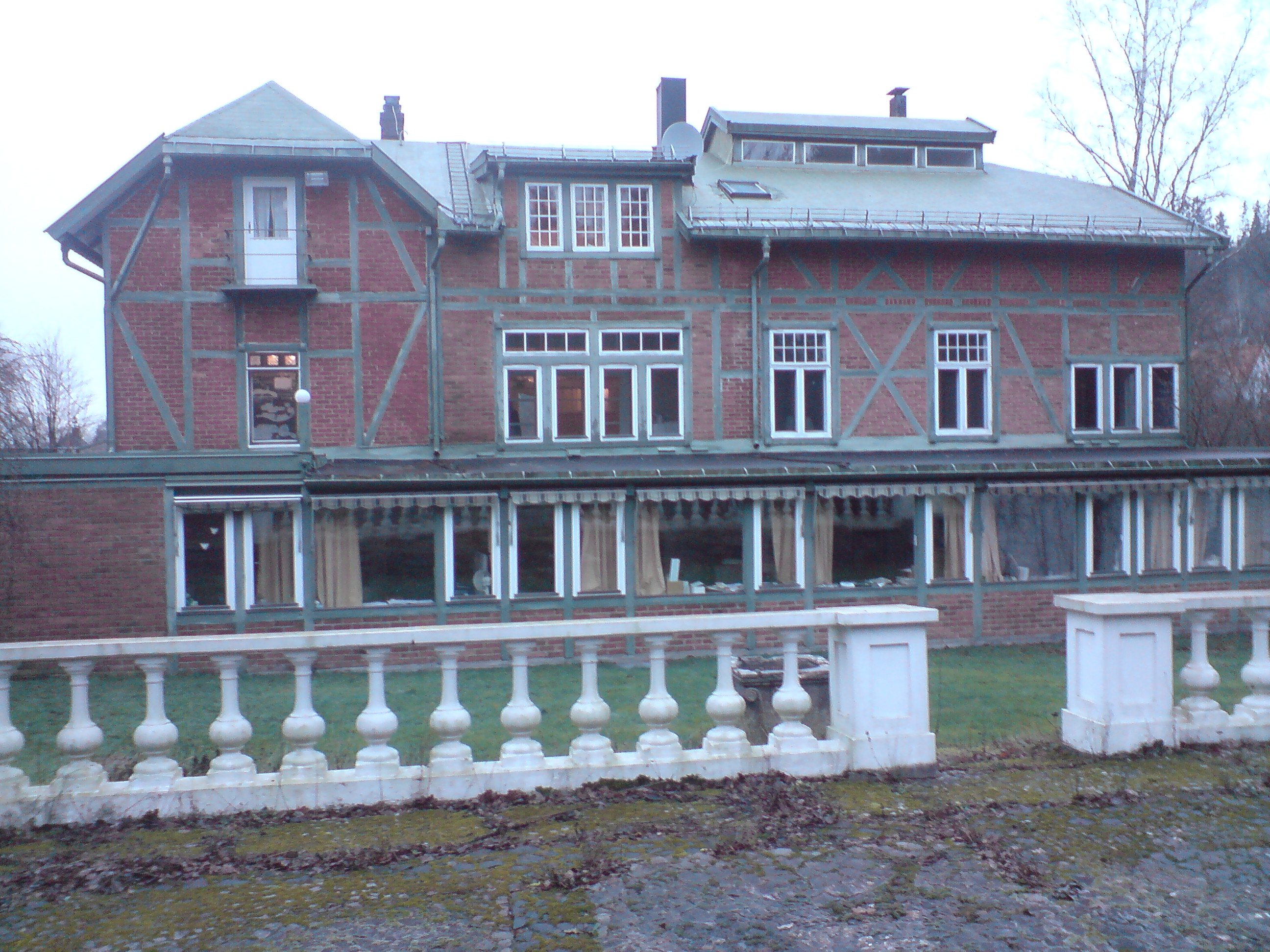|
Sør-Fron Church
Sør-Fron Church ( no, Sør-Fron kyrkje) is a parish church of the Church of Norway in Sør-Fron Municipality in Innlandet county, Norway. It is located in the village of Hundorp. It is the church for the Sør-Fron parish which is part of the Sør-Gudbrandsdal prosti (deanery) in the Diocese of Hamar. The white, stone church was built in an octagonal design in 1792 using plans drawn up by the architect Svend Aspaas. The church seats about 750 people. Because of size (750 seats) and central location in the Gudbrandsdalen valley, it has been nicknamed the ''Gudbrandsdalen cathedral'' ( no, Gudbrandsdalsdomen). The church has an octagonal floor plan and it is decorated in a colorful baroque style. It is one of the few rural churches from the 1700s in Norway that is constructed out of stone. Its style and design was unusual or unique in Norway at the time of construction. The church is described as the greatest building of the 1700s in Gudbrandsdalen. Muri describes the in ... [...More Info...] [...Related Items...] OR: [Wikipedia] [Google] [Baidu] |
Sør-Fron Municipality
Sør-Fron is a municipality in Innlandet county, Norway. It is located in the traditional district of Gudbrandsdal. The administrative centre of the municipality is the village of Hundorp. Other villages in the municipality include Gålå, Harpefoss, and Lia. The municipality is the 153rd largest by area out of the 356 municipalities in Norway. Sør-Fron is the 224th most populous municipality in Norway with a population of 3,064. The municipality's population density is and its population has decreased by 4.5% over the previous 10-year period. General information The prestegjeld of Fron was established as a civil municipality on 1 January 1838 when the new formannskapsdistrikt law went into effect. On 1 January 1851, the municipality was divided in two. The northwest portion became Nord-Fron Municipality (population: 4,685) and the southeast portion became Sør-Fron Municipality (population: 3,421). On 27 July 1956, a small area of Sør-Fron municipality (population: 7) wa ... [...More Info...] [...Related Items...] OR: [Wikipedia] [Google] [Baidu] |
Brande-Hörnerkirchen
Brande-Hörnerkirchen is a municipality in the district of Pinneberg, in Schleswig-Holstein, Germany Germany,, officially the Federal Republic of Germany, is a country in Central Europe. It is the second most populous country in Europe after Russia, and the most populous member state of the European Union. Germany is situated betwe .... References Municipalities in Schleswig-Holstein Pinneberg (district) {{Pinneberg-geo-stub ... [...More Info...] [...Related Items...] OR: [Wikipedia] [Google] [Baidu] |
Frederiksberg Church
Frederiksberg Church (Danish: Frederiksberg Kirke) is the oldest church building in the Frederiksberg district of Copenhagen, Denmark. Completed in 1734, it is built to an unusual octagonal design in Baroque style. It is situated at Frederiksberg Runddel in front of the main entrance to Frederiksberg Gardens, on the corner of Frederiksberg Allé and Pile Allé, History Earlier churches Frederiksberg was founded when King Christian III transferred 20 Dutch families from Amager to the area, which became known as ''Ny Hollænderbyen'' ("New Dutch Town"), or Ny Amager ("New Dutch Town). The residents of this community constructed a small wooden church in 1653 across the street from the present Frederiksberg Church, roughly where the Storm P. Museum stands today. It was burned down by Swedish troops in 1658 during the Assault on Copenhagen in the Second Northern War. After the war, the Dutch community returned to the area but, struck with deep poverty, a new church was not complete ... [...More Info...] [...Related Items...] OR: [Wikipedia] [Google] [Baidu] |
Nykirken
Nykirken (literally: "The new church") is a parish church of the Church of Norway in Bergen Municipality in Vestland county, Norway. It is located in the Nordnes area of the city of Bergen. It is one of the churches for the Bergen Cathedral parish which is part of the Bergen domprosti (arch-deanery) in the Diocese of Bjørgvin. The large, white, stone, cruciform church is located at the "Nykirkeallmenningen" square between the Strandgaten road and Vågen bay. Although it is generally known as the Nykirken, it was consecrated in 1622 by Bishop Nils Paaske as "Holy Trinity Church". When the church was originally built in 1622, there were several other churches in Bergen that were already several hundred years old, so this church was nicknamed "the new church", a name which has stuck for centuries. It is also (probably) an appropriate nickname, since the churches on this site have burned down several times and then been rebuilt, so it literally is usually the "newest" church in t ... [...More Info...] [...Related Items...] OR: [Wikipedia] [Google] [Baidu] |
Kongsberg Church
Kongsberg Church ( no, Kongsberg kirke, nn, Kongsberg kyrkje) is a building and congregation of the Church of Norway located at Kongsberg in Viken county, Norway. Kongsberg Church, a large baroque church, was designed by Joachim Andreas Stukenbrock and the construction period lasted from 1740 to 1761. It has a simple exterior with a richly decorated rococo interior. Kongsberg Church was constructed of brick and designed with a cruciform floor plan. The design of the church was inspired by Garnisons Church in Copenhagen. Virtually all fixtures in the church are of wood, but pillars and surfaces have been marbled. The whole church has a cool blue color as a result. On either side of the altar and pulpit are the pillars that bear the organ gallery above. The Baroque organ is from 1765 and made by organ builder Gottfried Heinrich Gloger. In the 1850s it was restored by Paul Brantzeg and in 1932 by Josef Hilmar Jørgensen. In 1928, Tinius Olsen gave a major donation to the rest ... [...More Info...] [...Related Items...] OR: [Wikipedia] [Google] [Baidu] |
Louis XVI Style
Louis XVI style, also called ''Louis Seize'', is a style of architecture, furniture, decoration and art which developed in France during the 19-year reign of Louis XVI (1774–1793), just before the French Revolution. It saw the final phase of the Baroque style as well as the birth of French Neoclassicism. The style was a reaction against the elaborate ornament of the preceding Baroque period. It was inspired in part by the discoveries of Ancient Roman paintings, sculpture and architecture in Herculaneum and Pompeii. Its features included the straight column, the simplicity of the post-and-lintel, the architrave of the Greek temple. It also expressed the Rousseau-inspired values of returning to nature and the view of nature as an idealized and wild but still orderly and inherently worthy model for the arts to follow. Notable architects of the period included Victor Louis (1731–1811), who completed the theatre of Bordeaux (1780), The Odeon Theatre in Paris (1779–1782) ... [...More Info...] [...Related Items...] OR: [Wikipedia] [Google] [Baidu] |
Octagon
In geometry, an octagon (from the Greek ὀκτάγωνον ''oktágōnon'', "eight angles") is an eight-sided polygon or 8-gon. A ''regular octagon'' has Schläfli symbol and can also be constructed as a quasiregular truncated square, t, which alternates two types of edges. A truncated octagon, t is a hexadecagon, . A 3D analog of the octagon can be the rhombicuboctahedron with the triangular faces on it like the replaced edges, if one considers the octagon to be a truncated square. Properties of the general octagon The sum of all the internal angles of any octagon is 1080°. As with all polygons, the external angles total 360°. If squares are constructed all internally or all externally on the sides of an octagon, then the midpoints of the segments connecting the centers of opposite squares form a quadrilateral that is both equidiagonal and orthodiagonal (that is, whose diagonals are equal in length and at right angles to each other).Dao Thanh Oai (2015), "Equilatera ... [...More Info...] [...Related Items...] OR: [Wikipedia] [Google] [Baidu] |
Rauma, Norway
Rauma is a municipality in Møre og Romsdal county, Norway. It is part of the traditional district of Romsdal. The administrative centre is the town of Åndalsnes. Other settlements in Rauma include the villages of Måndalen, Innfjorden, Veblungsnes, Verma, Isfjorden, Eidsbygda, Rødven, Åfarnes, and Mittet. Most settlement in the municipality is located along the fjords and in the Romsdalen valley. The municipality surrounds part of the southern end of Romsdalsfjorden and the Isfjorden and it also includes the Romsdalen valley and Romsdalsalpene mountains. In the lower part of the valleys and around Romsdal Fjord and Rødvenfjorden are driven agriculture with emphasis on livestock. The clothing industry has traditionally been a dominant industry in the municipality, especially in Isfjorden. In the summer, Rauma has a fairly large amount of tourist traffic. The top tourist attractions include mountain climbing/hiking, salmon fishing, Trollstigen, and the historic Rø ... [...More Info...] [...Related Items...] OR: [Wikipedia] [Google] [Baidu] |
Grytten Church
Grytten Church ( no, Grytten kyrkje) is a parish church of the Church of Norway in Rauma Municipality in Møre og Romsdal county, Norway. It is located near the mouth of the Rauma River in the village of Veblungsnes. It is the church for the Grytten parish which is part of the Indre Romsdal prosti (deanery) in the Diocese of Møre. The red, wooden church was built in an octagonal design in 1829 using plans drawn up by the architect S.H. Aspaas, possibly using the Sør-Fron Church as a model. The church seats about 250 people. There are four large columns which support the tower. Inside the church, there is a tall, wide wooden crucifix, possibly from the 13th century. The church has a so-called pulpit altar ( no, Prekestolalter), which is a pulpit centrally located directly above the altar (according to the style of Sør-Fron Church). The two church bells are from the previous churches. History The earliest existing historical records of Grytten Church date back to 1364, but it ... [...More Info...] [...Related Items...] OR: [Wikipedia] [Google] [Baidu] |
Røros Church
Røros Church or Bergstadens Ziir ( no, Røros kirke) is a parish church of the Church of Norway in Røros municipality in Trøndelag county, Norway. Located in the town of Røros, it is the main church for the Røros parish which is part of the Gauldal prosti (deanery) in the Diocese of Nidaros. The octagonal, whitewashed stone church was built in 1784 using plans drawn up by the architect Peter Leonard Neumann from Trondheim. The church seats about 1,600 people, making it the 5th largest church within the Church of Norway. It is also ranked by Riksantikvaren as one of the ten most high-profile churches in Norway. Since 1999, Røros Church is known as one of the concert venues of the Norwegian Advent Concert Series. History The first church in Røros was built in 1651, not too long after the town was founded in 1644. The mining town is entirely based around the Røros Copper Works. Prior to the founding of the town, the area was part of the Ålen Church parish. The first chu ... [...More Info...] [...Related Items...] OR: [Wikipedia] [Google] [Baidu] |
Harry Fett
Harry Fett (8 September 1875 – 13 September 1962) was a Norwegian art historian and factory owner. He headed the Norwegian Directorate for Cultural Heritage from 1913 to 1946. Personal life Fett was born in Christiania to factory owner Frans Eduard Fett and Ester Carolina Emilia Fischer. He was wed to Harriet Emilie Trepka Rode in 1903. Career Fett finished his examen artium in 1894. He then undertook a European study tour which lasted four years, visiting Germany and Italy. During these studies he was particularly influenced by the art historians Wilhelm Vöge and Adolf Furtwängler. Back in Norway he was appointed secretary of the Society for the Preservation of Ancient Norwegian Monuments. While in this position Fett carried out a large documentary work on church art from the Middle Ages throughout the country. He also did work for the Norwegian Museum of Cultural History. In 1908 he delivered his doctoral thesis, ''Billedhuggerkunsten i Norge under Sverreætten''. Af ... [...More Info...] [...Related Items...] OR: [Wikipedia] [Google] [Baidu] |





